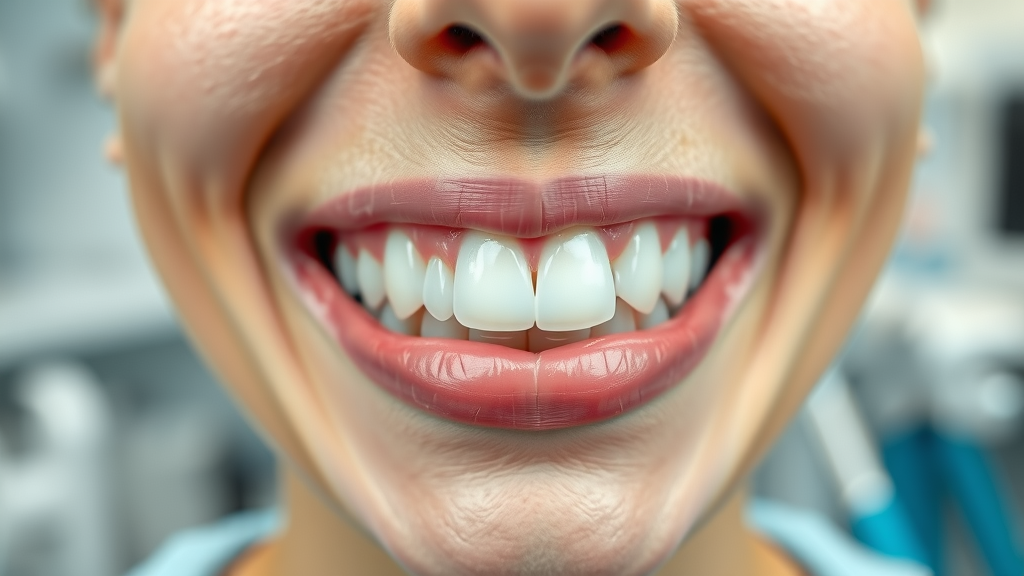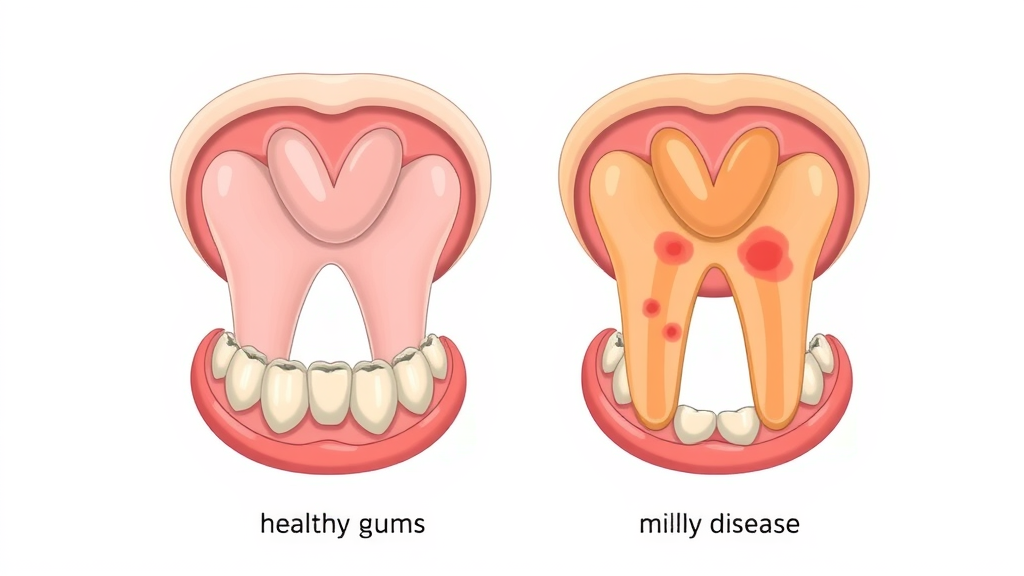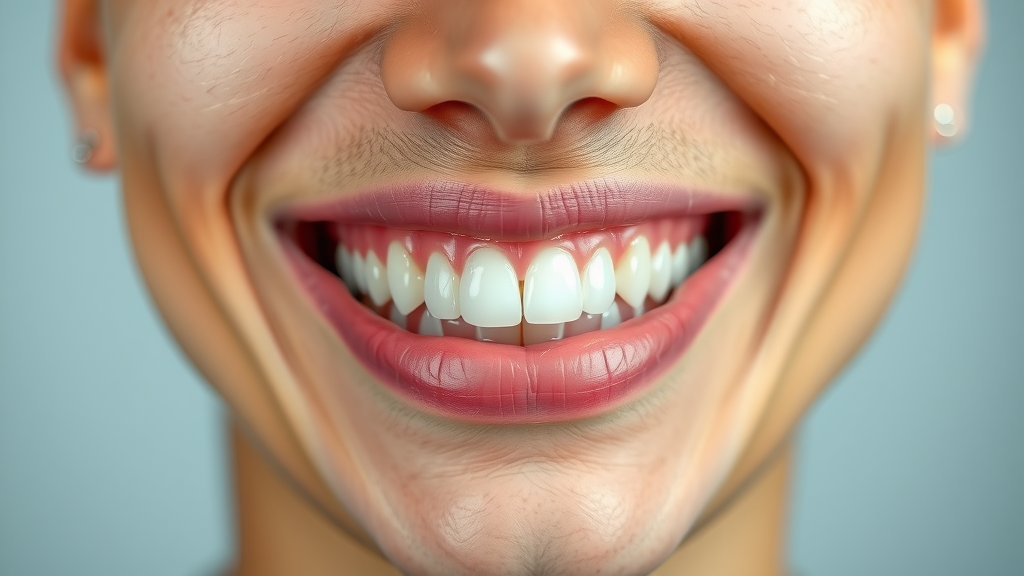Did you know? According to the Centers for Disease Control and Prevention, over 47% of adults in the United States suffer from gum disease . This shocking statistic might surprise you, especially considering how preventable most oral health problems are. Achieving healthy teeth and gums is not only possible—it’s within your control, using natural techniques that support your mouth and your whole body. By making a few meaningful changes to your daily routine, you can enjoy a beautiful smile and lifelong oral health.

The Surprising Truth About Healthy Teeth and Gums: Why Natural Dental Care Matters
Did You Know? Over 47% of Adults Suffer from Gum Disease—But You Can Take Control
If you think gum disease and tooth decay only affect a small number of people, think again. Nearly half of all adults deal with gum problems, putting their oral health and overall well-being at risk. The good news? Natural dental care offers an effective, accessible way to combat this silent epidemic. By focusing on good oral hygiene habits, regular self-checks, and nutritious foods, you can protect your teeth and gums without relying solely on harsh chemicals or expensive treatments. In fact, research referenced by the American Dental Association and other official sources highlights how daily habits can either protect or sabotage your dental health .
A holistic approach to oral hygiene doesn't just improve your smile—it safeguards your general health, too. Medical experts have found that poor oral care is associated with other health problems, such as heart disease, diabetes complications, and even increased risk of oral cancer . That's why taking control of your dental care at home, starting with simple, natural practices, is one of the smartest ways to achieve healthy teeth and gums for life.
Unlocking the Secrets of Healthy Teeth and Gums: A Comprehensive Guide
- The essential connection between oral hygiene and overall health
- How to spot early signs of gum disease and tooth decay
- Daily habits for maintaining healthy teeth and gums naturally
- Top foods and nutrients for strong teeth and healthy gums
- Natural remedies for optimal oral hygiene
- Preventing oral cancer and dental problems as you age
To unlock the secrets to lifelong oral health , think of your mouth as a mirror for your entire body. Keeping your teeth and gums healthy isn’t just about bright smiles—it's about supporting your immune system, avoiding chronic inflammation, and feeling your best at every age. Mastering the foundational aspects of dental care , from recognizing early warning signs to knowing which foods strengthen enamel, puts you ahead of problems like tooth decay or gum disease.
Understanding the link between everyday habits and dental issues gives you the power to make positive changes. Whether you're aiming to prevent oral cancer , help kids develop lifelong routines, or simply want to ensure your own wellbeing, this guide will show you all you need to know about achieving and maintaining healthy teeth and gums —naturally.
For those interested in a natural approach to oral wellness, exploring targeted solutions can further enhance your daily routine. You might find it helpful to review this in-depth look at natural ways to support healthy teeth and gums , which covers additional strategies and product insights that complement the habits discussed here.
Why Oral Hygiene Is Essential for Healthy Teeth and Gums
"Oral health is the gateway to overall health. Prioritizing your teeth and gums protects your entire body." – World Health Organization

The Science Behind Clean Teeth and Gums: Oral Bacteria and Your Health
Your mouth is home to millions of bacteria. While some are harmless, others can cause gum disease , tooth decay , and oral health problems when left unchecked. If you neglect your oral hygiene , bacteria combine with food debris to form a sticky film of bacteria called plaque. This plaque sits along your gum line and teeth, producing acids that erode enamel and irritate sensitive gum tissue. Over time, untreated plaque can lead to receding gums, inflammation, bleeding, and persistent bad breath .
By practicing good oral hygiene —that means consistent brushing, flossing, and rinsing—you interrupt this harmful cycle. Removing plaque helps prevent serious conditions like tooth decay and gum disease , while also reducing the risk of other health problems linked to poor oral care, such as heart disease. Remarkably, even simple practices like rinsing with water after soft drinks or sugary foods can make a noticeable difference in maintaining gums healthy .
| Step | Frequency | Products Needed | Benefits |
|---|---|---|---|
| Brush your teeth | 2x daily | Fluoride toothpaste, soft toothbrush | Removes plaque, prevents cavities |
| Floss between teeth | 1x daily | Dental floss | Reduces gum disease risk |
| Rinse with mouthwash | 1x daily | Alcohol-free mouthwash | Kills bacteria, freshens breath |
| Eat mouth-friendly foods | Each meal | Fruits, veggies, dairy | Strengthens enamel, supports gums |
Top Natural Practices for Healthy Teeth and Gums
Nutrition Tips: Eat Your Way to Healthy Teeth and Gums

- Include crunchy fruits and vegetables for natural cleaning
- Consume dairy for calcium and strong enamel
- Limit sugary snacks to prevent tooth decay
- Stay hydrated for optimal saliva production
Nutrition plays a central role in oral health and directly supports healthy teeth and gums . Crunchy produce like apples, carrots, and celery help naturally scrub away plaque and stimulate saliva. Dairy foods—yogurt, cheese, and milk—provide calcium and phosphorus, which are essential for rebuilding strong enamel. Staying hydrated improves saliva flow, which is your mouth's natural defense against acids and bacteria.
Additionally, limit your intake of soft drinks, candy, and refined carbohydrates. Sugar feeds bacteria and produces acids that erode enamel and attack the gum line . Making these good oral nutrition choices empowers you to prevent oral health problems —naturally.
Good Oral Hygiene Habits for Every Age
Age doesn't change the basics: brushing your teeth for two minutes twice a day, every day, is vital to good oral hygiene. For children, creating a fun, consistent routine establishes habits that last a lifetime. Older adults, who may be more susceptible to receding gums and dry mouth, should prioritize gentle products and regular dental visits to address new concerns.
Flossing removes plaque between the teeth that a brush can't reach, and using an alcohol-free mouthwash reduces bacteria while keeping your mouth refreshed. No matter your age, combining these practices with a balanced diet is your best strategy for keeping teeth and gums healthy year after year.
Recognizing and Preventing Gum Disease and Tooth Decay for Lifelong Oral Health
Spotting Signs of Gum Disease: From Redness to Recession

Gum disease often starts quietly, but looking out for early warning signs can make a major difference. Watch for redness, swelling, bleeding during brushing or flossing, persistent bad breath, and gums that pull away from the teeth (known as receding gums ). Left untreated, early gum disease (gingivitis) can advance to periodontitis, which can threaten tooth stability and lead to serious oral health issues.
Checking your gums in a mirror and noticing any change in shape, color, or texture is essential. If you detect these signs, it's time to step up your oral hygiene practices and consider consulting a dental hygienist for a professional opinion before the problem escalates.
How to Prevent Tooth Decay with Daily Dental Care
Preventing tooth decay is about keeping harmful bacteria at bay and protecting your enamel. Brush your teeth at least twice daily with fluoride toothpaste, and always floss before bed to remove plaque from those hard-to-reach spaces. Minimize snacking between meals, as frequent eating gives bacteria more opportunities to produce acids that damage teeth.
Choose snacks like nuts, cheese, and crunchy veggies over sweets and soft drinks. Rinse your mouth with water after meals if a toothbrush isn't available. Following these simple steps helps safeguard your route to healthy teeth and gums while also reducing the risk of other oral health problems .
Watch: Expert Oral Hygiene Tips for Healthy Teeth and Gums
The Power of Dental Care: When to See a Dentist for Optimal Oral Health
Professional Dental Care and Oral Cancer Prevention
Even with impeccable home dental care , scheduling regular checkups with your dentist is critical for oral health . Dental professionals can identify early signs of oral cancer , tooth decay , and gum disease before you notice them. Cleanings remove hardened plaque (tartar) that home methods can't tackle, lowering the risk of ongoing damage.
Be sure to discuss any changes, discomfort, or unexpected symptoms with your dentist or dental hygienist . Early detection—even of the most subtle abnormalities—can save your teeth and sometimes your life.
How Older Adults Can Maintain Healthy Teeth and Gums
Older adults often face new dental challenges, including dry mouth (from medications), receding gums , and an increased risk of oral health problems . To protect healthy teeth and gums , seniors should use gentle, non-abrasive toothpaste, consider rinses to keep the mouth moist, and maintain a regular dental appointment schedule.
Regular self-checks for changes in tooth color, suspicious sores, or gum sensitivity are also important. Ensuring that dentures or bridges fit properly and that oral hygiene routines are maintained can keep smiles strong for a lifetime.
Natural Remedies for Healthy Teeth and Gums: What Works and What to Avoid
- Oil pulling for oral hygiene
- Aloe vera for gum health
- Baking soda and salt for gentle cleaning
- Charcoal and whitening risks: Pros and cons

Looking for gentle yet effective oral health boosters? Oil pulling with coconut oil can reduce bacteria, while aloe vera gel soothes inflamed gums. Baking soda and salt, when used sparingly, offer mild cleaning properties for both teeth and gums without harsh chemicals.
However, be cautious with “natural” fads like charcoal toothpastes. While they can temporarily whiten teeth, charcoal is abrasive and may harm enamel and gums with long-term use. Always consult your dentist before adding new remedies to your routine, and prioritize evidence-backed options for your dental care .
People Also Ask: Answers to Your Questions About Healthy Teeth and Gums
How can I make my teeth and gums healthy again?
To restore healthy teeth and gums , begin by practicing excellent oral hygiene : brush your teeth twice a day, floss daily, and rinse with a gentle mouthwash. Eat a balanced diet rich in vegetables, fruits, and dairy for vital nutrients. Lastly, visit your dentist for a professional exam and cleaning to address any existing issues and create a personalized dental care plan.
Regenerate Your Smile: Steps to Restore Healthy Teeth and Gums
Start by breaking bad habits that harm your mouth, such as smoking or constant snacking on sugary foods. Focus on good oral hygiene habits, use products designed to strengthen enamel, and choose natural remedies that soothe and protect gums. Regularly monitor for symptoms of gum disease or tooth decay , and never hesitate to talk to your dentist if you notice changes.
What are signs of unhealthy gums?
Unhealthy gums may appear red, swollen, or bleed during brushing and flossing. Signs also include chronic bad breath , gum recession (gums pulling away from the teeth), and persistent soreness. Ignoring these symptoms can lead to severe gum disease or even tooth loss , so prompt attention is key.
Common Symptoms of Poor Oral Hygiene and Gum Disease
Chronic inflammation, tender gums, and a noticeable shift in gum shape are warning signs. Watch for frequent bleeding, persistent bad breath, or a feeling that your teeth are loosening. These indicators often mean plaque and bacteria have built up along the gum line , increasing your risk of serious oral health problems.
How are healthy teeth and gums supposed to look?
Healthy gums should be pale pink, firm, and fit snugly around each tooth. Your teeth should be ivory or bright white, free from visible plaque, and feel smooth to the touch. Look for a balanced, symmetrical gum line, as unevenness can signal gum disease or underlying problems.
Spotting Healthy Teeth and Gums: Color, Texture, and Structure

A closer look shows that healthy gums have a stippled, “orange peel” texture, and there’s no swelling or redness. Teeth should have no chips, cracks, or discoloration, and your bite should feel natural, without shifting or pain. If you spot these features, you know you’re on the right track!
How do I know if I have healthy teeth and gums?
If your gums never bleed when brushing, you don’t suffer from persistent bad breath, and your teeth feel clean and strong, you likely have good oral health . Regular dental checkups can confirm this, helping you catch small issues early on. Consistent self-checks and mindfulness about changes go a long way in maintaining your smile.
Key Signs of Optimal Oral Health at Any Age
No matter your stage of life, the hallmarks of good oral health are fresh breath, clean and shiny teeth, and gums that are firm and pink. If you don’t experience pain, bleeding, or lingering sensitivity, you can be confident you’re taking excellent care of your teeth and gums .
FAQs: Clearing Up Myths about Dental Care and Oral Health
-
Is bleeding while brushing normal?
No, bleeding is usually a sign of gum inflammation or early gum disease. Improve your oral hygiene and consult your dentist if bleeding persists. -
How often should I replace my toothbrush?
You should replace your toothbrush every three to four months, or sooner if bristles are frayed. -
Are electric toothbrushes better for oral hygiene?
Electric toothbrushes can remove more plaque and may be especially helpful for children or those with limited dexterity, but proper technique matters most. -
Can good nutrition reverse gum disease?
Good nutrition supports healing, but gum disease often requires both home care and professional treatment. Address problems early for the best outcome.
Simple Habits for Healthy Teeth and Gums: Your Daily Oral Hygiene Checklist
- Brush your teeth for 2 minutes twice daily with fluoride toothpaste
- Floss every evening to remove plaque
- Use an alcohol-free mouthwash after brushing and flossing
- Avoid tobacco products for optimal gum health
- Eat a balanced diet rich in vitamins and calcium
- Schedule regular dental checkups every 6 months
Demonstration: Best Brushing and Flossing Techniques for Healthy Teeth
Key Actions for Sustainable Oral Health and Beautiful Teeth
- Adopt a consistent home oral hygiene routine
- Monitor for early signs of gum disease
- Choose natural foods and remedies wisely
- Partner with your dentist for lifelong oral health
Experience the Benefits of Healthy Teeth and Gums Today
"Every beautiful smile starts with a commitment to good oral health. Invest in your teeth and gums today for confidence and well-being tomorrow."
Renew your teeth and gums with ProDentim - Click here NOW to get started...
Take action today by upgrading your hygiene routine, making smart food choices, and visiting your dentist. Small changes lead to a lifetime of healthy teeth and gums!
If you’re ready to take your oral health journey to the next level, consider exploring comprehensive solutions that blend natural ingredients with scientific research. Discover how innovative approaches can help you maintain strong teeth and resilient gums for years to come by visiting this guide to achieving healthy teeth and gums with ProDentim . Whether you’re seeking advanced tips or simply want to reinforce your daily habits, you’ll find valuable insights to support your commitment to a brighter, healthier smile. Embrace the next step in your oral care routine and unlock the benefits of a truly holistic approach.
 Add Element
Add Element  Add Row
Add Row 




Write A Comment